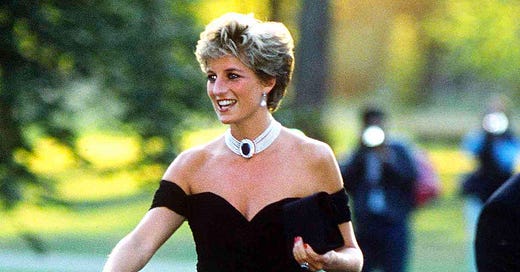The prom looms closer in only a month, and my friend is eager to find the perfect dress. She’s on a mission for something glamorous yet tasteful. She invites me over to her phone, where a mesmerizing array of chic dresses under $30 are open on her Pinterest board. “I want to draw inspiration from Princess Diansa’s revenge dress,” she declares, referencing the lead in the television series “The Crown.” As she carefully sifts through options, her eyes settle on a sophisticated black strapless dress, its fabric whispering promises of elegance and allure.
In the fashion world, television showcases stylish ensembles linked to compelling narratives. Viewers build an intimate connection with beloved characters that imbues their clothing with a sense of relatability. Consequently, viewers often mimic TV characters’ fashion choices in their personal attire. As the internet and social media platforms continue to grow, television’s impact on fashion trends is set to escalate in the foreseeable future, primarily through channels like social media marketing. This allure of TV-inspired fashion draws people to fast fashion brands with its promise of style and affordability. Unfortunately, this pattern carries significant environmental hardships.
Since the 1980s, television shows have been pivotal in shaping our fashion preferences. Series such as Dynasty in the ’80s and Sex and the City in the ’90s have left a permanent mark on how we adopt fashion trends. In the ’80s, factory design limitations kept low-cost mass production of standardized styles such as Levi’s 501 jeans static, making looks that appeared in “Dynasty” exclusive to affluent individuals. However, the ’90s saw a surge in women’s fashion apparel imports, leading to accessible, mass-produced clothing and the beginning of fast fashion. Series such as “Sex and the City” presented fashion-forward, relatable characters with aspirational yet attainable outfits. The technological advancements of the 2000s propelled the fast fashion industry into a new era.
Today, television shows like “The Crown” and “Euphoria” are prominent figures in a sea of influence. Fan pages on platforms such as Instagram and TikTok, along with popular hashtags, have rapidly spread the fashion depicted in both series across the internet like wildfire. User-generated content, including makeup and fashion recreations from “Euphoria” and an Instagram post by Demi Lovato to her then 93.3 million followers, discussing the “Diana In Her Own Words” documentary, where she referred to Princess Diana as a “badass,” further amplified attention to iconic fashion looks in “The Crown.” Fast fashion now features lighting-fast turnover to keep up with these trends. Notably, fast fashion peaked during the pandemic due to the rise of e-commerce fashion sites such as Shein, which offer convenience and clothing that aligns with TV-inspired trends. In 2021, the fast fashion industry was responsible for ~10% of annual global carbon emissions, primarily attributed to the billions of greenhouse gasses released by international shipping of fast fashion websites. Projections indicate that greenhouse gas emissions from the fast fashion sector will increase by over 50% by 2030, correlated with trends in overconsumption and internet expansion. With just years remaining until 2030, the environment’s future appears grim.
My friend’s quest for the perfect prom dress, influenced by Princess Diana, is a microcosm of the broader intersection between television and fast fashion. Iconic looks inspired by TV characters and the rapid evolution of trends fueled by social media underscore the influence of television on consumer behaviour, specifically in the realm of fast fashion purchasing. As fashion enthusiasts, it is crucial to acknowledge television’s impact on the relentless pace of the fashion industry to address the environmental hardships that stem from fast fashion.







This piece was such an enjoyable read, I think this topic is so interesting! I really enjoyed this metaphor you used: "their social media presence spreads like wildfire, igniting and modelling trends with undeniable force.", referring to TV shows such as the Crown and Euphoria. It successfully conveys the quick, significant, and revolutionary nature of the social media presence of these shows, grabbing the reader's attention and highlighting the scope of their influence. I believe you successfully highlighted television's influence on fashion preferences and how quick fast fashion companies are to recreate these famous looks.
I found your piece on the evolution of fast fashion and television super insightful. It is interesting to see just how influential these shows are beyond entertainment and in the fashion industry. While there is so much access to different content now I recognize how shows and movies still have a major impact on our style and that even as styles change we are look at entertainment to form our understanding on what to wear and what not to wear.